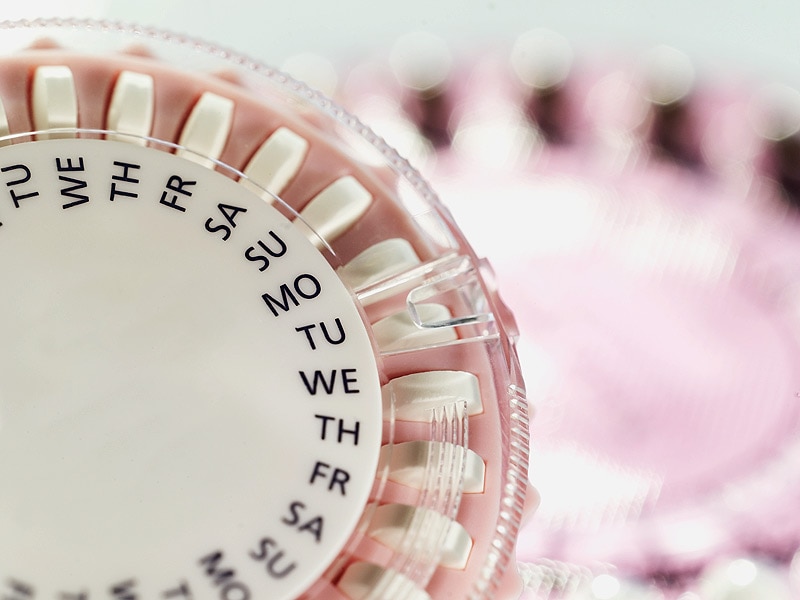Health Centers > Sexual Health Center > Erectile Dysfunction > Treatment options for erectile dysfunction
Treatment options for erectile dysfunction
Treatment options are best considered in steps, starting with the least invasive and moving incrementally to the more invasive treatment possibilities. As a first step, modification of reversible causes of erectile dysfunction should be considered. Most patients with erectile dysfunction who are smokers should be advised to stop.
A Review of Erectile Dysfunction
Arterial Blood Supply
Venous Drainage
Lymphatic Drainage
Neuroanatomy
Central Nervous System Connections
- Mechanisms of erection
- Causes of erectile dysfunction
Vasculogenic Causes
Neurogenic Causes
Endocrinological Causes
Priapism and Postpriapism ED
Psychogenic Causes
- Epidemiology of erectile dysfunction
- Risk factors for erectile dysfunction
- Diagnosis of erectile dysfunction
History
Physical Examination
Special Investigations
- Treatment of erectile dysfunction
Psychosexual Counseh5ng
Medical Therapies
Vacuum Decices
Surgical Therapies
- Erectile Dysfunction - Conclusions
Coexistent hypertension or diabetes should be treated. It is also reasonable to consider treatment with a statin if the patient's serum low density lipoprotein cholesterol is consistently > 3.3 mmol/1. Increased physical exercise is also good general advice as well as weight reduction for those who are obese. At all stages, patient preferences should be taken into account.
PSYCHOSEXUAL COUNSELING
Although organically induced erectile dysfunction is more common than psychogenic erectile dysfunction, almost all patients have a psychological component to their problem. Psychosexual counseling may therefore be helpful in many cases, especially where there are relationship difficulties which compound the problem. Psychosexual counseling generally involves obtaining a detailed history not only from the patient but also, if possible, from the partner.
Psychosexual counseling is most effective when the problem is due to technique or there are unrealistic expectations on one or both sides of the relationship.
As already mentioned; severe relationship problems are a potent source of erectile dysfunction, and these may sometimes be resolved through counseling. The most commonly employed approach is that pioneered in 1970 by Masters and Johnson. Briefly this involves a program that aims to:
- Understand the problem;
- Establish relearning of sexual behavior;
- Remove anxiety;
- Teach communication skills;
- Redefine success; and
- Teach permission giving.
Psychosexual counseling may often be helpful. Unfortunately, there have been very few randomized controlled trials to evaluate outcome, so the evidence to support this treatment remains scanty. Psychosexual counseling may also be used in tandem with medical therapy for erectile dysfunction.
MEDICAL THERAPIES
Oral agents
Almost universally patients prefer medical therapies to either counseling or the more invasive treatment options. Until recently, however, there have been no agents combining efficacy with safety to the extent of being approved by the regulatory authorities. However, agents which have been used historically as well as the newer agents which have been, or are about to be, approved are reviewed here. Now medical therapy with oral agents is generally the first-line treatment option in men presenting with erectile dysfunction.
Male Infertility
Primary infertility affects 15-20% of married couples. Approximately one-third of cases ...
α-Adrenoceptor antagonists
Yohimbine hydrochloride is an α 2-adrenoceptor antagonist which acts both peripherally and centrally. It has been suggested that the α 2-presynaptic receptor may be localized on the NANC nitrergic nerves innervating the cavernosal arteries. Blockade of these receptors may enhance corporeal vasodilatation and thereby enhance erections. Furthermore, as α 2-adrenoceptors are also widely distributed in the central nervous system, it is conceivable that the drug, derived from the bark of the yohimbe tree, may also have an effect there. Clinical trials have only involved small numbers of patients, but the data that are available suggest that yohimbine has no benefit beyond that of placebo in established organic impotence. However; in patients with psychogenic or early arteriogenic erectile dysfunction, some efficacy has been reported in small studies.
Yohimbine is utilized in doses of up to 10mg three times daily. Its central action probably accounts for the side-effects of tremulousness, insomnolence, headache, palpitations and minor elevations of blood pressure.
Doubt as to the true efficacy of yohimbine has been increased by the recent withdrawal from development of delaguamine hydrochloride, a compound with a thousand-fold higher affinity for the α 2-adrenoceptor, due to lack of efficacy.
α 1-Adrenoceptor antagonists are potent vasodilators and, as such; would be expected to enhance erectile response. Recent data from its use in men with symptomatic hypertension (approximately one-third of whom complain of some erectile dysfunction) suggest a mild beneficial effect with several of these compounds on sexual function as well as high blood pressure-related symptoms.
In contrast, other antihypertensive agents; especially β-blockers and diuretics, were associated with a significant incidence of erectile dysfunction (Figure 54). Phentolamine, widely used for intracavernosal treatment; has recently been tried orally as Vasomax. Clinical trials have confirmed it to be an effective treatment of erectile dysfunction. A buccal preparation with a shorter onset of action has also been used, with a success rate of 30-40%. Safety worries, however; have prevented its approval by the regulatory authorities.
Dopamine agonists
There are five specific dopamine membrane receptors that have been isolated and categorized into two sub-families, D 1-like and D 2-like. Apomorphine has been shown to be a dopamine agonist with somewhat more potent D2 -like effects than D1 -like effects. The presence of dopaminergic pathways in the paraventricular nucleus, which is known to be important in engendering the erectile response; provides the rationale for the use of dopamine agonists in erectile dysfunction (Figures 55 and 56). A 60% response rate was seen after its subcutaneous injection in men with psychogenic erectile dysfunction.
Transbuccal apomorphine has also shown efficacy. Overall; a 70% response was reported in terms of erectile function. Some patients also experienced an improvement in sexual drive. Figure 57 reveals the response compared with placebo.
The drawback with apomorphine, however, is its side-effects, which include persistent yawning, nausea, vomiting and orthostatic hypotension. Recent formulations (a sublingual sustained-release tablet) appear to minimize these adverse effects.
Serotonin agonists
Trazodone is both a centrally acting serotonin agonist and a peripheral sympatholytic agent. Studies in small numbers of patients have suggested some efficacy in erectile dysfunction. It has been used with success in patients with erectile dysfunction according to anecdotal reports, but other results are less favorable; properly conducted longer-term studies are required to verify these data.
The side-effects include drowsiness, hypotension, nausea and vomiting. Trazodone combined with yohimbine has been recommended, although there is little scientific evidence of a synergistic effect.
Type 5 phosphodiesterase inhibitors
As mentioned earlier, phosphodiesterases (PDE) break down the cyclic nucleotide signal molecules cAMP and cGMP.
Intracorporeal smooth muscle contains predominantly PDE5 as well as types 2 and 3. Inhibition of PDE5 increases levels of available cGMP and thereby enhances erectile dysfunction.
Sildenafil (Viagra) is a selective inhibitor of PDE5 with a half-life of 3.8 h (Figure 58). It thus increases the duration of action of intracorporeal cGMP, thereby enhancing the normal erectile response without inducing priapism. Patients with erectile dysfunction who have participated in randomized controlled trials of sildenafil and who have continued medication in open-label extension trials for up to 3 years have reported high rates of satisfaction with treatment (96%) and improved ability to engage in sexual activity (99%) (Figure 59). Efficacy with the agent generally increases with increasing doses and duration of therapy (Figures 60 and 61).
At dosages of 25, 50 and 100mg, sildenafil is generally well tolerated, although vasodilatory effects, such as facial flushing and headaches, have been reported. The drug is most effective when taken approximately 1 h before intercourse but efficacy has been reported in as early as 14 min. When sildenafil is taken with a high-fat meal, the rate of absorption is reduced, with a mean delay in Tmax of 60 min and a mean reduction in Cmax of 29%. However, this decrease in the rate of absorption is not expected to have any clinical consequences. A transient effect on color vision has been observed in a small subset of patients, which is apparently due to inhibition of PDE6 activity in the cells of the retina. Gastrointestinal disturbances may also occur (Figure 62). Because sildenafil increases the effect of NO, the use of Viagra and organic nitrates in any form, at any time, is contraindicated. Interactions between sildenafil and nitrates such as glyceryl trinitrate, isosorbide dinitrate, sodium nitroprusside and amyl nitrate may occur with profound hypotension and risk of cardiac arrest. Recently, two other PDE5 inhibitors, tadalafil (Cialis ™) and vardenafil (Levitra ™), have been tested in phase III studies (Figure 63). Cialis ™ and Levitra ™ have recently received approval.
Tadalafil (Cialis ™) has a mean half-life of 17.5 h and has been reported; at a dose of 20 mg, to enable 73-80% of sexual intercourse attempts to be completed successfully (with appropriate sexual stimulation) between 30 min and 36 h after dosing (Figure 64). Tadalafil was administered without restrictions to alcohol or food intake, although substantial alcohol consumption is not recommended. Therapy was well tolerated; with an overall incidence of side-effects such as headache and dyspepsia of 2.1% compared with 1.3% for placebotreated patients. Tadalafil is contraindicated with organic nitrates-and at least 48 h must elapse after taking tadalafil before their administration. With the exception of once-daily tamsulosin (Flomax) 0.4 mg, it is also contraindicated with α-blocker therapy.
Vardenafil HCl (Levitra ™) has a half-life of 4.7 h, a value not dissimilar from that of sildenafil (Viagra). At a dose of 20 mg, up to 85% of men reported significant improvement in erections at 26 weeks compared with 28% of men who received placebo. Similar to sildenafil, vardenafil seems effective even in challenging patient groups such as those with diabetes mellitus (Figure 65) or post-prostatectomy erectile dysfunction (Figure 66). Side-effects include headache and facial flushing, and, like sildenafil (Viagra) and tadalafil (Cialis ™), vardenafil (Levitra ™) should not be used in conjunction with any form of nitrate therapy. Because of its mild hypotensive effect, vardenafil (Levitra ™) should not be taken in conjunction with α- blockers, such as terazosin. In addition, vardenafil (Levitra ™) has been shown to produce minor prolongation of the QT interval and, as a consequence, should be avoided in patients with congenital QT prolongation and those taking Class 1A (e.g. quinidine, procainamide) or Class III (e.g. amiodarone, sotalol) antiarrhythmic medications.
Transdermal drug delivery system
Although the attempts that have been made to achieve transdermal drug delivery have received some publicity, the efficacy of these methods is, in fact, low. Nitroglycerin paste was evaluated by Heaton and colleagues, and Kim and McVary assessed PGE1 and papaverine. Whereas some enhancement of intracorporeal blood flow is detectable on color duplex Doppler ultrasonography, rigid erections have only been obtained in the occasional patient with neurogenic erectile dysfunction (these patients already exhibit a supersensitive response to intracorporeal vasodilators and should therefore be ideal subjects).
Transurethral corporeal drug delivery
Contrary to the expectations of some, the epithelial lining of the distal urethra has proven to be an excellent route for the absorption and transfer of vasoactive substances to the corpora cavernosa. The urethra is lined by complex columnar cells, and there are submucosal vessels that connect the corpus spongiosum and corpora cavernosa. The transurethral route of drug delivery has proved to be capable of inducing hemodynamic changes in the corpora comparable with those obtained by direct intracavernosal injection.
The novel delivery system developed by Vivus, the so-called MUSE (medicated urethral system for erection), consists of a polypropylene applicator with a hollow stem measuring 3.5 cm in length and 3.2 mm in diameter (Figure 67). The tip contains a solid pellet of PGE1 in doses up to 1000mg, but combinations of PGE1 and the α1 -adrenoceptor blocker prazosin are also undergoing evaluation for delivery by this route.
Patients should be titrated up to the most effective dose (usually 500-1000 mg), usually starting with a smaller dose (125 or 250mg). Intraurethral insertion is advised immediately after voiding, when the urethra is moist, to obviate the need for a lubricant. Prior urination also helps the semi-solid pellet of PGE1 to dissolve and become distributed along the length of the urethra. With the penis held vertically, the applicator is gently introduced into the urethra; the button on the end of the applicator is depressed to expel the medication (see Figure 67). The applicator is then rocked gently to ensure that the medication separates from the applicator, which is then withdrawn. The medication is dispersed along the urethra by gently rolling the penis between the palms of the hands. The smooth muscle relaxation and vasodilatory action are aided by standing or walking around for approximately 10 min. An erection develops within 5-10 min and lasts for 30-60 min.
A 64.9% rate of successful intercourse was reported from a randomized controlled trial involving 1511 men. Other studies, however, have reported lower rates of success, and men usually prefer to use oral agents.
The side-effects are minor and include urethral pain and occasional bleeding. Prolonged responses leading to priapism have been reported in only a handful of cases.
Direct intracorporeal injection
The discovery that direct injection of vasoactive substances into the corpora could produce a rigid erection suitable for intercourse was made simultaneously by Brindley (using phenoxybenzamine) and Virag (using papaverine). These observations produced the first truly effective non-surgical therapies for erectile dysfunction which are widely used.
Papaverine (a non-specific PDE inhibitor) and phentolamine (an α1-adrenoceptor blocker) were initially used either singly or in combination. Prolonged responses, however, which on occasions led to priapism and risk of ischemic injury to intracavernous smooth muscle, were not infrequently seen.
Approval by the US FDA of PGE1 for intracavernous injection led to the widespread use of this substance as an alternative to papaverine. The efficacy of PGE1 is similar to that of papaverine, but the incidence of prolonged responses is much lower.
There may also be a lesser tendency towards intracavernous fibrosis with PGE1. However, the disadvantage of PGE is that many patients complain of penile pain after the injection due to the PG-induced activation of intracorporeal pain receptors.
Intracavernous PGE 1 has been reported in one study to be more effective than the intracavernosal delivery system.
With this delivery system even more than with intraurethral PGE 1, dose titration is of major importance.
The usual starting dose is 5 mg, increasing to 10-20 mg as maintenance therapy (Figure 68).
Other vasodilatory agents may also be employed. Vasoactive intestinal polypeptide (VIP) has been used. Padma-Nathan and colleagues have advocated a cocktail of agents, the so-called tri-mix (prostaglandin, papaverine, phentolamine), and have reported responses in patients who had failed with single-agent therapy. Complications of intracavernous pharmacotherapy include priapism, hematoma formation and fibrosis leading to erection deformities. Patients should be informed of these drawbacks before initiating therapy, and receive written instructions as to what they should do if an erection persists for more than 4 h.
VACUUM DEVICES
The basic principle underlying the use of vacuum devices for erectile dysfunction is simple. Arterial inflow and storage in the corpora may be insufficient, but this may be overcome by the suction effect of a vacuum; retention of rigidity is accomplished by the use of a constriction ring (Figure 69). The devices are non-invasive and relatively inexpensive, and many patients find them helpful. They may be used in conjunction with other therapies, such as intraurethral, intracavernosal PGE 1 , or sildenafil.
Side-effects are uncommon, but petechial hemorrhage and bruising may occasionally occur. Some patients complain that the erection is unnatural and that the constriction ring is uncomfortable, especially at the moment of ejaculation. Others are discouraged by the lack of spontaneity and the rather cold erection produced by these somewhat cumbersome contraptions.









